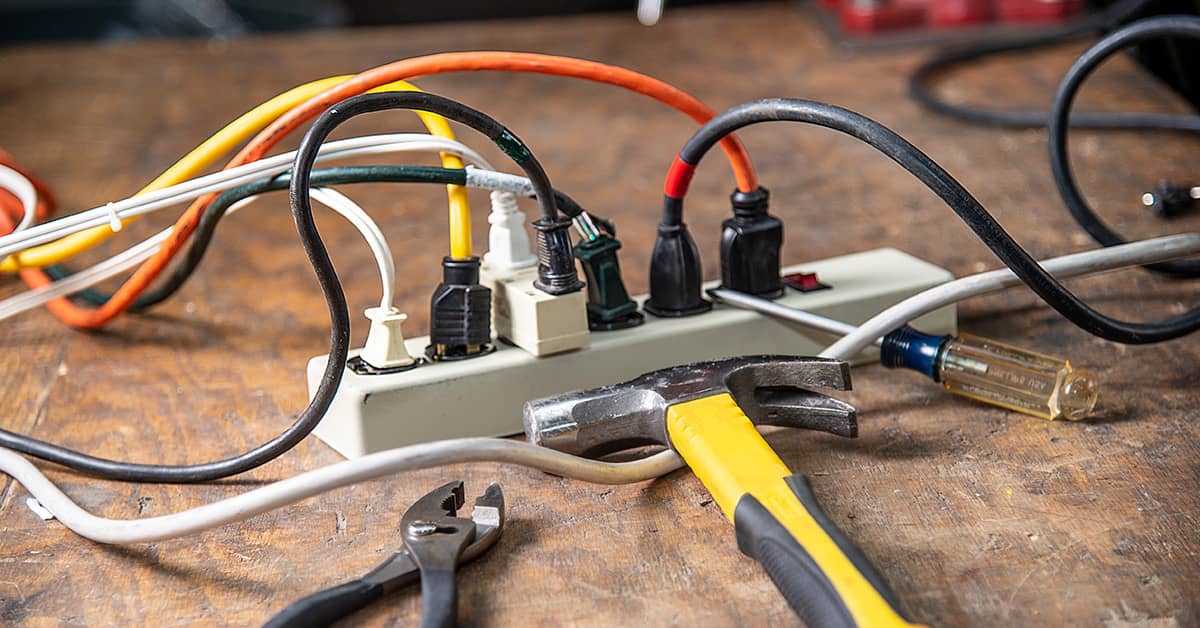Common electrical violations that OSHA cites
Date Posted: 05/08/2023

In general industry, OSHA cites more electrical violations per year than machine guarding violations. These hazards usually don’t involve electricians, but just employees using electrical equipment.
Electrical citations get issued under Sections 1910.303 and 1910.305, which are two separate standards. During the last 12 months, those two standards accumulated more than 1,900 citations, compared to just under 1,500 for machine guarding under Section 1910.212.
The industries most often cited for electrical violations included manufacturing, retail, wholesale, lodging and food service, and transportation and warehousing.
To offer a few examples, OSHA commonly issues citations for things like:
- Using portable fans that were not approved for industrial locations,
- Leaving electrical boxes open,
- Failing to maintain sufficient space around electrical boxes, and
- Improperly using flexible cords or extension cords.
General issues cited
Within the Subpart S electrical standards, Section 1910.303 is titled “General” and covers a broad range of issues. In fact, OSHA’s Field Operations Handbook advises against using the General Duty Clause for these violations because paragraph (b)(1) of that standard says, “Electric equipment shall be free from recognized hazards that are likely to cause death or serious physical harm to employees.”
Since exposure to electricity could cause serious physical harm, OSHA can cite that paragraph for a number of hazards. A search for citations finds things like damaged insulation on wiring, or exposed electrical parts of equipment motors.
The most-cited paragraph of 1910.303 is (b)(2) which says, “Listed or labeled equipment shall be installed and used in accordance with any instructions included in the listing or labeling.” OSHA cites this for things like using fans that aren’t approved for the location, or even using a residential coffee maker in the workplace.
Section 1910.303 also requires maintaining sufficient access and working space around electrical equipment under paragraph (g)(1). OSHA uses this when employees stack boxes or equipment in front of electrical panels — a problem that occurs at many workplaces.
Wiring issues cited
The other commonly-cited standard is 1910.305, “Wiring methods, components, and equipment for general use.” These violations can get a bit more complicated, but include issues such as outlets or switches without covers, or improperly using flexible cords (such as extension cords) where permanent wiring should be used.
One of the most-cited paragraphs is (b)(1)(ii) which says, “Unused openings in cabinets, boxes, and fittings shall be effectively closed.” For example, if a circuit breaker panel has an unused breaker space, it must be filled with a blank. It cannot be left open, and placing tape over the empty slot is not sufficient.
Another commonly-cited paragraph is (g)(2)(iii), which says: “Flexible cords and cables shall be connected to devices and fittings so that strain relief is provided that will prevent pull from being directly transmitted to joints or terminal screws.” OSHA uses this for equipment powered by flexible cables coming from an electrical panel.
The Bureau of Labor Statistics lists more than 2,000 injuries from exposure to electricity each year and around 150 deaths per year. Neither of the above standards specifically requires training workers on electrical safety, but employers should provide training on properly using (and not improperly using) electrical equipment and tools.
How Safety Management Suite Can Help
Employees may need training even if an OSHA regulation does not require it. The electrical standards don’t mention training, but they do require employees to properly use equipment, and avoid using unsafe equipment. The Training area of the J. J. Keller® SAFETY MANAGEMENT SUITE provides classroom courses that you can modify to meet your needs, as well as online courses that allow self-directed training.
E-mail Newsletter
Sign up to receive the weekly EHS Insider email newsletter for safety articles, news headlines, regulatory alerts, industry events, webcasts, and more.